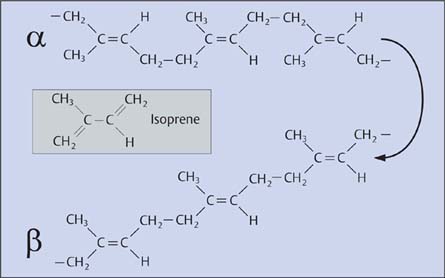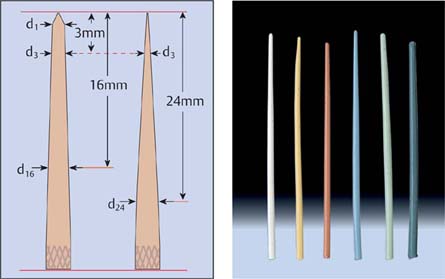14 Gutta-percha
“Getah pertja” is a Malay term that means “fibers from sticky plant juices.” The gutta-percha tree provides a raw substance (a gray, translucent mass with a reddish shine) for the dental material of the same name. Chemically it is an all-trans form of polyisoprene which is harder, more brittle, and less elastic than natural rubber.
The addition of softeners (1%–4%), metal sulfates (1%–15%, radiopaque), and zinc oxide as a main component (59%–76%) transforms the raw material into the “endodontic” gutta-percha (Friedman et al., 1975; Gurgel-Filho et al., 2003); this composition has remain unchanged for decades.
Dental-percha exists in two forms:
• α (more linear molecule);
• β (stairlike molecule);
For endodontic practice, as would be expected, dental guttapercha is most often used in the β-form. The α-form is used only in combination with heating techniques (e.g., Obtura, Ultrafil, Thermafil). At raised temperatures, gutta-percha behaves like other plastic materials (Thermoplast): Softening above 65°C, melting at 100°C, and in the α-form beyond 160°C without decomposing while remaining soft and fluid.
14.1 Gutta-percha
The sap of the isonandra gutta-tree provides the raw material for dental gutta-percha. Chemically, the substance is a polymer of the trans-form of the isoprene molecule. Normally, gutta-percha exists in the β-form (the typical dental gutta-percha points at room temperature). If gutta-percha is heated to 65 °C, its softening temperature, and slowly cooled (0.5 °C/h), the α-form exists at 42–49 °C. This is sticky, with a tendency toward becoming more fluid and is too soft to condense properly.
14.2 Gutta-per/>
Stay updated, free dental videos. Join our Telegram channel

VIDEdental - Online dental courses




